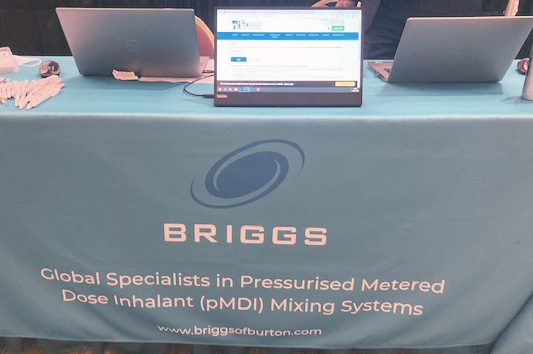Hulse also pointed out studies showing that 1234 does not degrade to HFC 23. Although he said that Honeywell has done its own studies, he did not offer any data from those studies, saying, “We believe that probably the most important are from some of these third party authors who have looked at this particular breakdown mechanism”. He acknowledged that 1234ze can be flammable when temperatures are over 30 C and relative humidity is greater than 50%; however, he showed images from a flammability test in which 1234, like 134a, self-extinguished on removal of the ignition source. Hulse noted at the end of his talk that Honeywell expects to proceed with a Phase 3 trial and that commercial GMP production of the propellant is expected by the end of this year.

In his talk on “Considerations for Robust Clinical and Commercial Manufacturing of Next Generation Sustainable pMDIs,” Nick Atkinson of Recipharm addressed methods for dealing with the flammability issues of both 152a and 1234, citing consumer aerosol manufacturing as a model and reviewing European, UK, and US guidances for flammable propellants. He also stressed that layers of protection (the “Swiss cheese model”) will be needed to lower risk.
Jag Shur of Nanopharm presented “The Formulator’s Guide to Transitioning to Low Global Warming Potential pMDIs,” in which he presented the results of studies comparing the physical properties of the new propellants and noted that it would be a shame to miss the opportunity to improve existing MDIs while reformulating. Among the differences in properties he noted were the lower density of 152a, greatly increased solubility of beclamethasone in 152a compared to 134a, highly variable sedimentation rates for albuterol sulfate in 1234, and differences in droplet size, velocity, and charge among the propellants.
A panel discussion at the end of the session offered the opportunity for delegates to ask questions of Pritchard, Hardwick, Shur, Atkinson, Kuehl, and Hulse, with moderators Steven Stein of Kindeva Drug Delivery and Dave Lewis of Ab Initio Pharma. The main topics of discussion included the question of improving MDIs versus copying existing products, the necessity of cooperation within the industry, the need for healthcare regulators to get involved, and pleas to keep in mind the needs of developing countries.
In addition to the podium presentations, four of the twelve interactive workshops presented by OINDP suppliers also addressed issues related to sustainability, including a workshop from Zephex 152a maker Koura titled, “HFA 152a Roadmap to Commercialization.” Other workshops focused on sustainability included H&T Presspart‘s on “Future Challenges Facing Metered-dose Inhalers: Sustainability And Effective Delivery Of Complex Molecules”; Kindeva Drug Delivery’s “Sustainable pMDIs – Is Nirvana Within Reach?”; and DH Industries’ workshop, “Sustainable pMDI Filling And Flammable Propellant Handling.”
Koura and Honeywell were both prominent sponsors of RDD 2022 and took part in the exhibition, where they answered questions about their proposed propellants at their exhibit tables. The Orlando meeting was Honeywell’s first appearance at RDD. Another new exhibitor, Briggs of Burton, was talking to delegates about the commercial HFA 152a MDI production systems they are designing. Kindeva, which recently announced the addition of a second lower-GWP MDI manufacturing line, was also situated in the Project Green area, as was i2c Pharmaceuticals, whose Respitab technology for MDI filling is being co-developed by Aptar Pharma for use with lower-GWP propellants.


